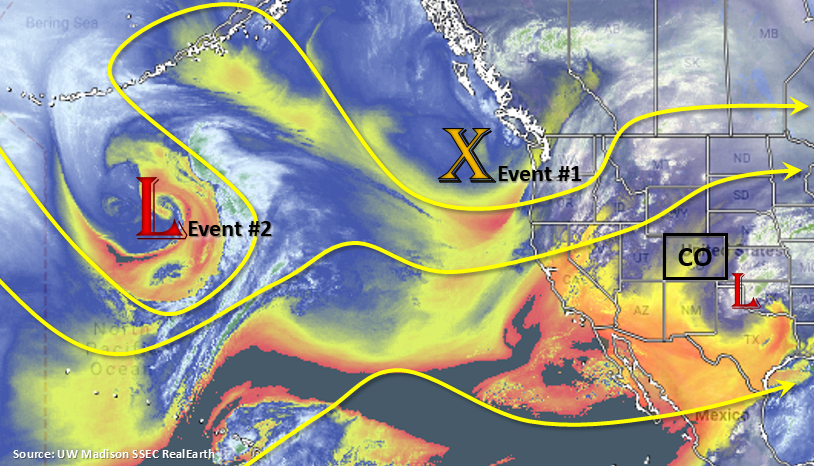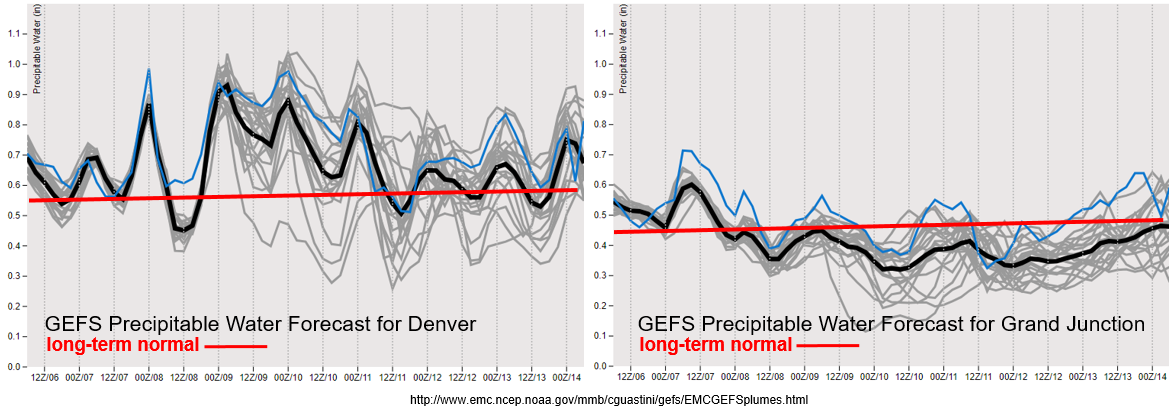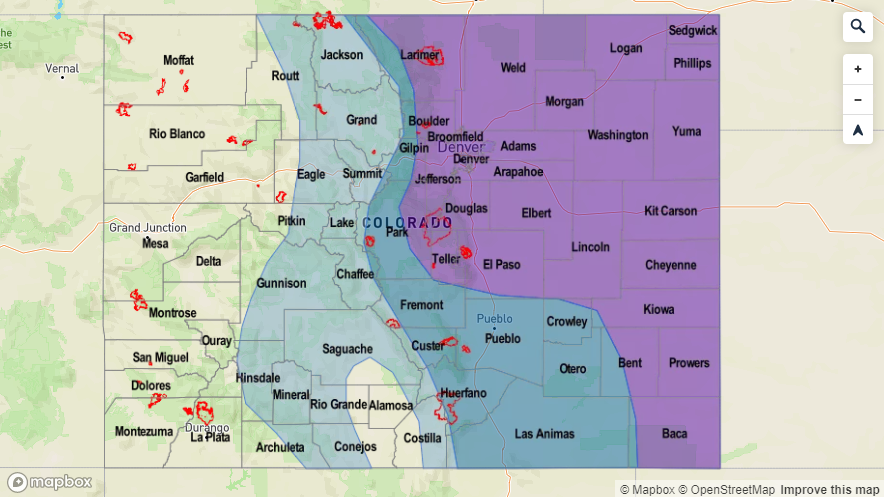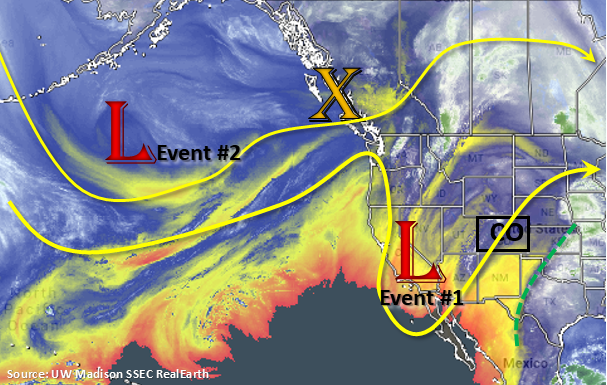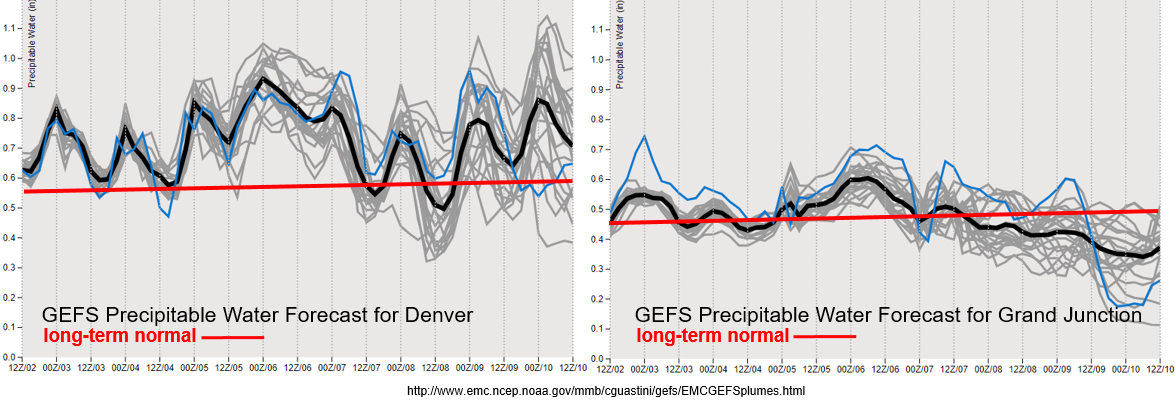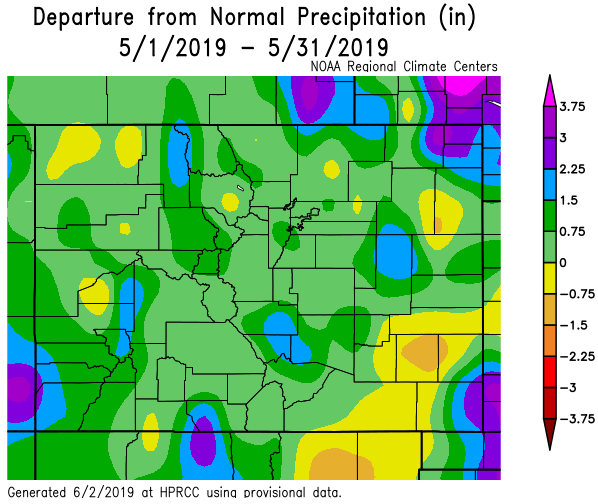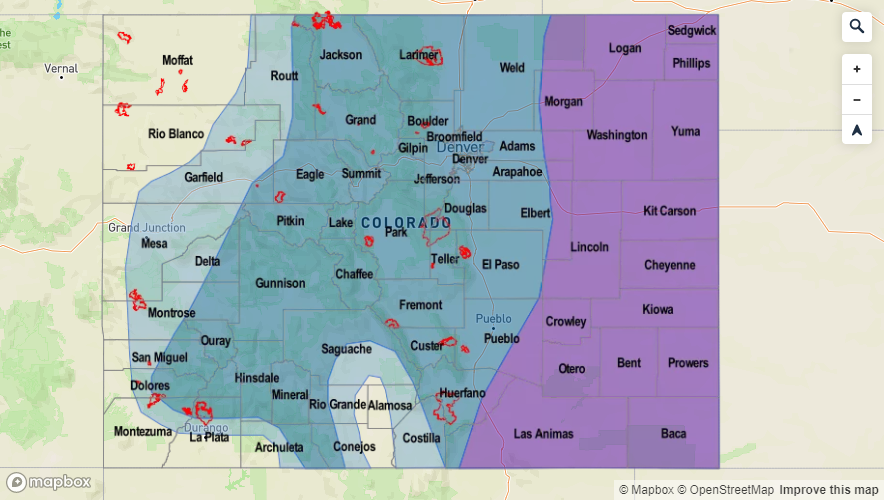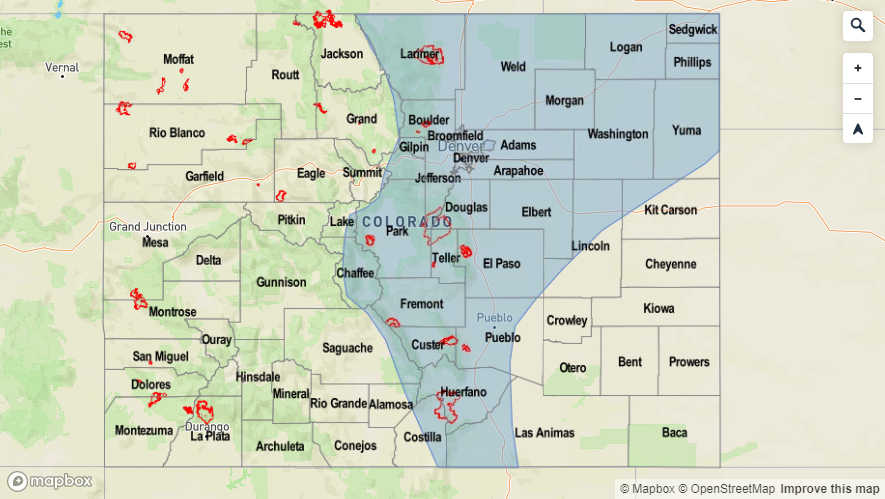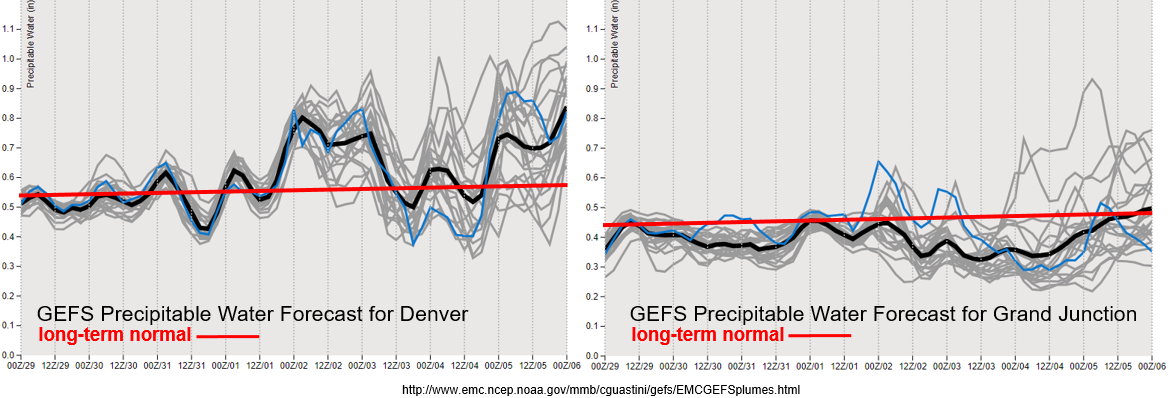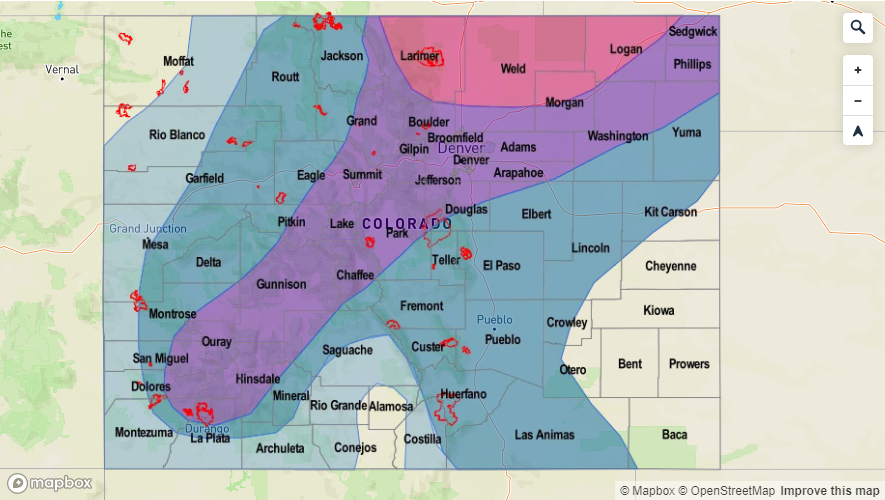Issue Date: Thursday, June 6th, 2019
Issue Time: 1:00PM MDT
Valid Dates: 6/7 – 6/21
The low that passed to our south yesterday can be seen over the Texas Panhandle in the water vapor imagery below. Behind this low, a ridge begins to build over Colorado, which will bring warmer temperatures to the area over the next couple of days. Event #1 really begins as the next trough drops south on Saturday. The trough will brush the northern border of the state as it dips south, but the building high over Mexico will keep it from fully dropping through the state. It is a relatively quick moving system, so it shouldn’t stick around for longer than a couple of days. However, it is associated with the polar jet, which means it will bring some cooler temperatures to the state. Sometime between Saturday morning and afternoon, it will drop a strong cold front through the state, which will significantly drop high temperatures on Sunday and Monday. Depending on timing of the cold front, heavy rainfall, severe weather and even overnight rainfall on the plains is possible. Expect the cooler temperatures and increased low level moisture to last through Monday.
Northwesterly flow fills in behind the passage of the trough, which will likely drop weak cool fronts through the state, mid-level energy and on/off low level moisture Tuesday into Wednesday. This usually creates an active precipitation pattern with most of the action remaining over the mountains. Some activity can be expected in the adjacent plains with the steering flow, but the drop off in moisture lowers the flood threat. Event #2 begins at the end of next week as a weak trough sets up over the west coast. While a lot can change with a forecast this far out, an Elevated flood threat has been issued as PW tends to start to creep up over the eastern plains during this point in the year. Should the mid-level energy pair with higher moisture values, heavy rainfall may be possible.
After tomorrow evening, PW for Denver drops off drastically before the next approaching system. There is a large increase in moisture and less amplified diurnal cycle from into Monday; thus, the Elevated flood threat. After Monday, PW values show large spread and decrease to more climatological values through next Thursday. To the west, PW drops off beginning tomorrow morning with the flow becoming more southwesterly and westerly. This will pull in the dry air seen in the water vapor imagery above. With the jet overhead, critical fire weather is possible beginning as early as tomorrow afternoon due the combination of increasing winds and low relative humidity. This may be upgraded to a Red Flag Warning, so please follow the daily FTB for the latest.
Snowpack:
The very hot stretch of weather will come to an end with the approaching system this weekend. Thus, the Elevated threat (for small rivers and streams over western and southern Colorado) will end by Sunday evening. After the cooler temperatures are in place, expect the melting rate to slow and water levels stabilize. The Flood Warning for the San Antonio and Conejos Rivers has been extended through Monday morning by the NWS. Expect minor flooding throughout the weekend with the high flows. Elsewhere, several advisories have been issued (see the SPM from today) as many mountain streams continue to run at or slight above bankfull. There have not been any reports of flooding yet, but use caution near the cold and rushing waters. Hot temperatures return to the forecast by the end of next week, so expect a ramp up in runoff once again. Please tune into the FTO next week for evolving details.
Event #1: Friday (6/7) – Monday (6/10)
No Apparent Threat/Elevated Threat as a trough brushes the northern border of the state.
The polar jet stream dips south for the next event and will brush the northern border of Colorado. Due to the fast motion of the system not expecting widespread flooding. However, a cold front on Saturday will help return low level moisture and cause heavy rainfall for the eastern plains of Colorado if it passes through during maximum instability. Therefore, expect an increase in thunderstorm activity by Saturday evening with much cooler temperatures on Sunday and Monday. The Elevated threat remains on Monday as PW remains high and storms are possible over the mountains. This could be problematic if they track over a recent burn area. The threat decreases after Event #1 as PW values drop off over eastern Colorado, although storms are still possible over the higher terrains each afternoon
Event #2: Thursday (6/13) – Saturday (6/15)
Elevated Threat as a weak troughing pattern looks to set up to the west of Colorado again and returns southwesterly flow.
Event #2 begins at the end of next week as it looks like another weak trough sets up to our west and turns flow to southwesterly over the state. Again, not a lot of confidence in the details as a lot can change, but Elevated flood threat has been issued as PW tends to start to creep up over the eastern plains during this point in the year. This system could bring heavy rainfall and severe weather to the eastern plains.

